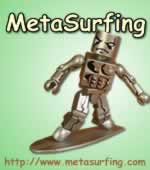Various methods of transmitting power wirelessly have been known for centuries. Perhaps the best known example is electromagnetic radiation, such as radio waves. While such radiation is excellent for wireless transmission of information, it is not feasible to use it for power transmission. Since radiation spreads in all directions, a vast majority of power would end up being wasted into free space.
One can envision using directed electromagnetic radiation, such as lasers, but this is not very practical and can even be dangerous. It requires an uninterrupted line of sight between the source and the device, as well as a sophisticated tracking mechanism when the device is mobile.
The key: Magnetically coupled resonance
In contrast, WiTricity is based on using coupled resonant objects. Two resonant objects of the same resonant frequency tend to exchange energy efficiently, while interacting weakly with extraneous off-resonant objects. A child on a swing is a good example of this. A swing is a type of mechanical resonance, so only when the child pumps her legs at the natural frequency of the swing is she able to impart substantial energy.
...
Still, for laptop-sized coils, power levels more than sufficient to run a laptop can be transferred over room-sized distances nearly omni-directionally and efficiently, irrespective of the geometry of the surrounding space, even when environmental objects completely obstruct the line-of-sight between the two coils. Fisher points out: "As long as the laptop is in a room equipped with a source of such wireless power, it would charge automatically, without having to be plugged in. In fact, it would not even need a battery to operate inside of such a room." In the long run, this could reduce our society's dependence on batteries, which are currently heavy and expensive.
...
WiTricity is rooted in such well-known laws of physics that it makes one wonder why no one thought of it before. "In the past, there was no great demand for such a system, so people did not have a strong motivation to look into it," points out Joannopoulos, adding, "Over the past several years, portable electronic devices, such as laptops, cell phones, iPods and even household robots have become widespread, all of which require batteries that need to be recharged often."
As for what the future holds, Soljacic adds, "Once, when my son was about three years old, we visited his grandparents' house. They had a 20-year-old phone and my son picked up the handset, asking, 'Dad, why is this phone attached with a cord to the wall?' That is the mindset of a child growing up in a wireless world. My best response was, 'It is strange and awkward, isn't it? Hopefully, we will be getting rid of some more wires, and also batteries, soon.'"
More.

No comments:
Post a Comment